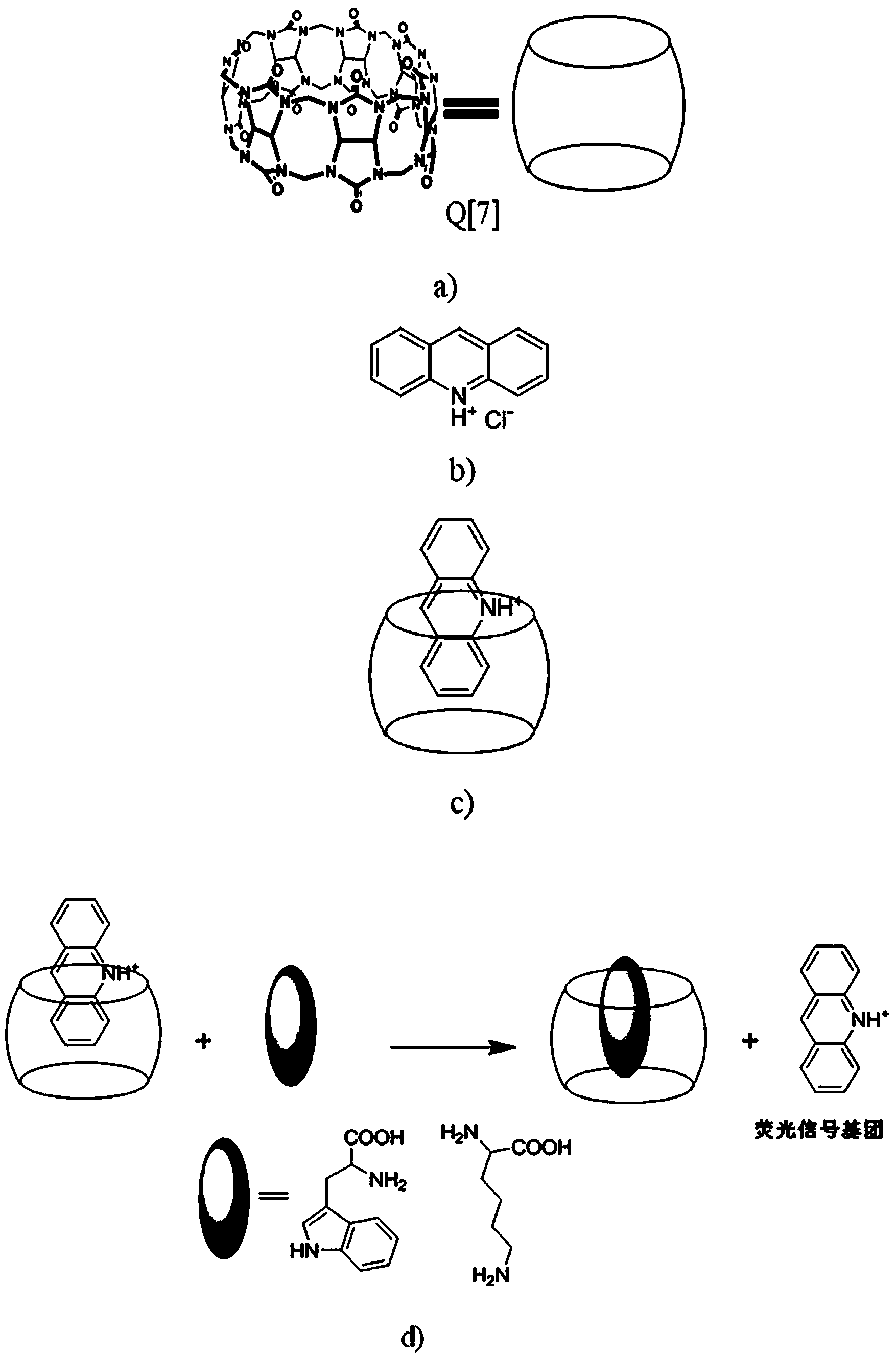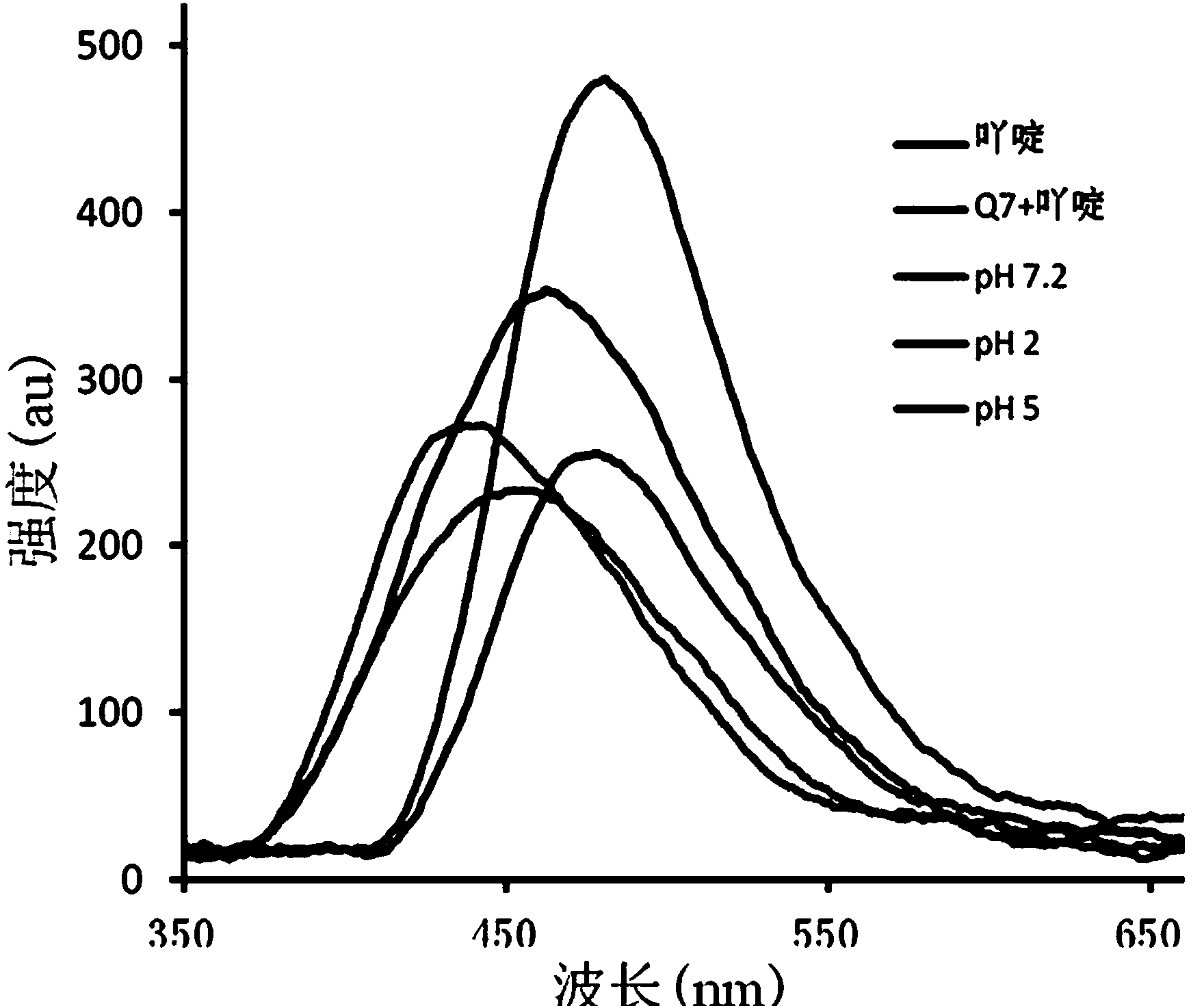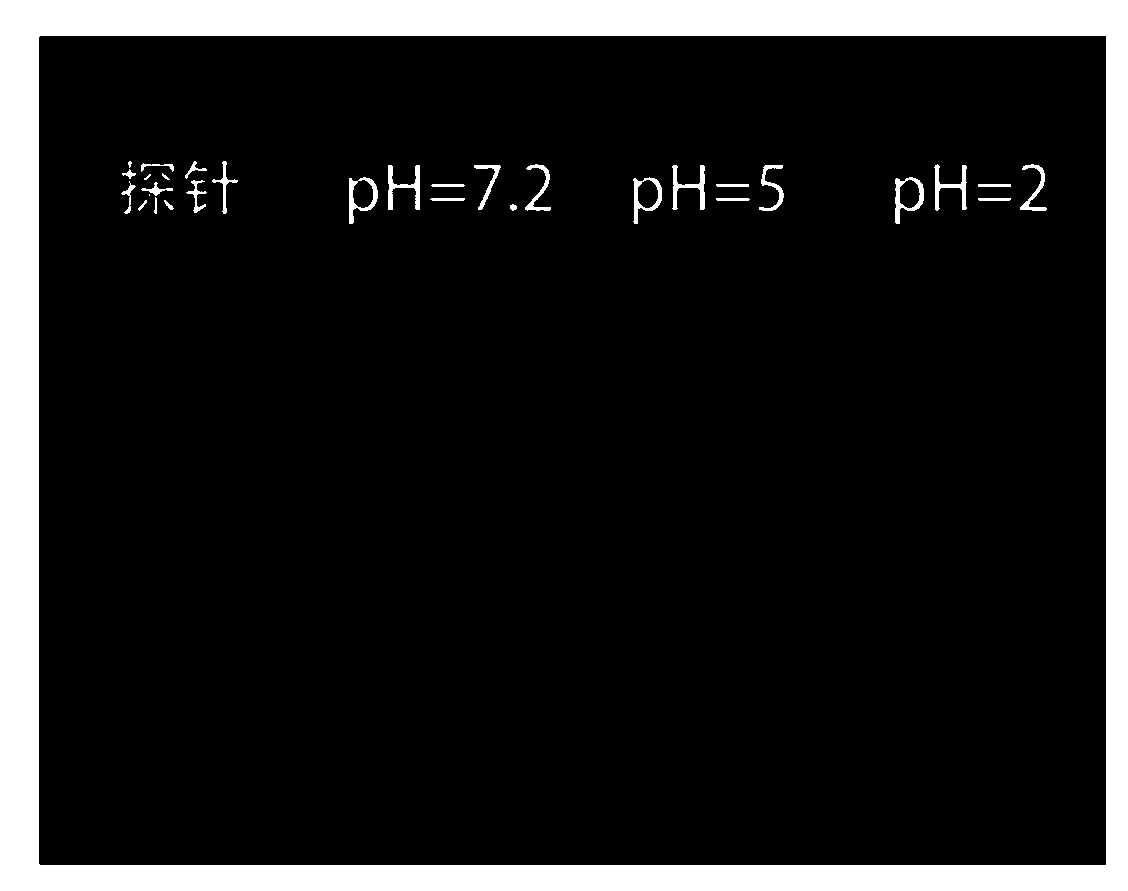Fluorescence detection method for amino acid under different pH values
A fluorescent detection and amino acid technology, applied in the fields of analytical chemistry and life sciences, can solve the problems of amino acid molecular detection that has not been reported yet, few high-selective identification detection, and difficulty in rapid detection, etc., and achieves wide application prospects and use value, operation The method is simple and the effect with superior performance is selected
- Summary
- Abstract
- Description
- Claims
- Application Information
AI Technical Summary
Problems solved by technology
Method used
Image
Examples
Embodiment 1
[0016] Example 1: Fluorescent Probes P Synthetic method:
[0017] Weigh 28 mg (0.02 mmol) of seven-membered melon ring and 4.4 mg (0.02 mmol) of acridine hydrochloride respectively, add them to 50ml of distilled water, and stir and react at 80-95°C for 2h. After cooling to room temperature, the aqueous solvent was removed by rotary evaporation. Precipitate with acetone, filter with suction, and dry. 30 mg of white solid was prepared with a yield of 94%.
[0018] Preparation of buffer solution: Acetic acid-sodium acetate buffer solution (pH4.6) Take 5.4g of sodium acetate, add 50ml of water to dissolve it, adjust the pH value to 4.6 with glacial acetic acid, and then dilute to 100ml with water. Phosphate buffer (pH7.2) Take 50ml of 0.2mol / L potassium dihydrogen phosphate solution and 35ml of 0.2mol / L sodium hydroxide solution, add freshly boiled cold water to dilute to 200ml, shake well, and get ready. pH 2.0 is directly diluted with 0.1 mol / L dilute hydrochloric acid and d...
Embodiment 2
[0019] Example 2: Fluorescent Probes P Identification and detection of amino acid molecules
[0020] (1) Fluorescent probes P Solution preparation method: Weigh 16.2 mg fluorescent probe solids, dissolve them in different pH buffers, and prepare 10 mL solutions with a concentration of 1.00×10 -3 mol L -1 , according to the need to use different pH buffers to dilute to the appropriate concentration step by step.
[0021] (2) Standard solution of amino acid molecules: weigh high-grade pure amino acid molecules to prepare 100mL solution, the concentration of amino acid molecules is 1.00×10 -3 mol L -1 , as needed, use different pH buffer solutions to gradually dilute to an appropriate concentration;
[0022]Add fluorescent probe to 10.0 mL volumetric flask P Different pH buffers (1.00×10 -4 mol L -1 , 1.0 mL), tryptophan or lysine molecule (2.00×10 -4 mol L -1 , 1.0 mL). Dilute to the mark with different pH buffer solutions, shake well, let stand at room temperature...
Embodiment 3
[0027] Weigh 14 mg of seven-membered melon ring and 2.5 mg of acridine hydrochloride, dissolve them in a buffer solution with pH=7.2, and prepare 10.0 mL with a concentration of 1.0 × 10 -3 mol L -1 , serially diluted to 1.00 × 10 with buffer as needed -4 mol L -1 (2) Standard solution of tryptophan or lysine and other coexisting amino acid molecules: weigh superior pure amino acid molecules to prepare 100mL buffer solution with pH=7.2, the concentration of amino acid molecules is 1.00×10 -3 mol L -1 , and gradually dilute to a suitable concentration with buffer solution as needed; (3) Take five 10.0 mL volumetric flasks and add fluorescent probe 1.00×10 -4 mol L -1 Standard solution 1.0 mL, add 1.00×10 -4 mol L -1 , 0, 0.2, 0.5, 1, 2 ml of tryptophan or lysine solution diluted to the mark, shake well, and stand at room temperature for 5 minutes; (4) introduce fluorescence spectrum for measurement, excitation wavelength 245nm; (5) tryptophan The concentration of ac...
PUM
 Login to View More
Login to View More Abstract
Description
Claims
Application Information
 Login to View More
Login to View More - R&D
- Intellectual Property
- Life Sciences
- Materials
- Tech Scout
- Unparalleled Data Quality
- Higher Quality Content
- 60% Fewer Hallucinations
Browse by: Latest US Patents, China's latest patents, Technical Efficacy Thesaurus, Application Domain, Technology Topic, Popular Technical Reports.
© 2025 PatSnap. All rights reserved.Legal|Privacy policy|Modern Slavery Act Transparency Statement|Sitemap|About US| Contact US: help@patsnap.com



